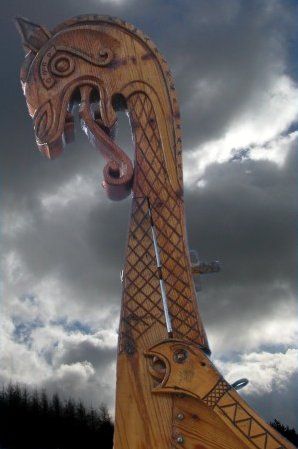By Periklis Deligiannis

Dragonhead on the prow of a Viking longship.
.

The historical districts of Scandinavia. The following probable tribal districts are noted among others: Uppland (political center of the Svears) including Vendel site, Ostergotland, Vastergotland, Smaland (small territories of other Gott/Gotar tribes), Gotland Isle (land of the Vagoth or Gutar), Oland isle (land of the Vagoth?), Hordaland (land of the Aerothi?), Ringerike (land of the Ragnaricii), Rogaland (land of the Rugii), Vestfold and Viken (main lands of the Raumarike/Raumaricii), Bohuslan (land of the Wulfings?), Halland (land of the Hallin), Blekinge (land of the Bergio?), Skane and Sjaelland (core territories of the Danes), Angel (cradle of the Angles), Jylland (land of the Jutes), Rugen island (probably colonised by the Rugii), Nordfrisien (North Frisia).
.
The Vendel Culture period of the history of eastern and southern Scandinavia (including Jutland and the Danish isles) is the era before the classic Viking Age. The Viking Age lasted from AD 793 to the early 11th century, while the Vendel Era lasted from the mid-6th century AD to the end of the 8th century and is characterized by princely burials of warlords and warriors with impressive weapons. The later historical period and the homonym cultural conglomerate (Vendel Culture) took their name from the site Vendel at the historical district Uppland in eastern Sweden, north of Old Uppsala, the ancient centre of the Svear kings. The most characteristic cemeteries were found there. It seems that Uppland – where later the important cities of the Viking age Uppsala and Sigtuna were developed – was very important politically during the Vendel period. The area was rather the political center of the tribe of the Svears (Latin: Suiri and Suirones and according to Jordanes: Suehans, Nordic: Svear, Anglo-Saxon: Sweonas, modern Swedes) who expanded to it earlier coming from Svealand, their core territory in the south. Uppland means the upper land, the land in the north.
More
 The oldest grave is from the 8th century. But why were these two people buried together? (Illustration: Arkikon)
The oldest grave is from the 8th century. But why were these two people buried together? (Illustration: Arkikon)










